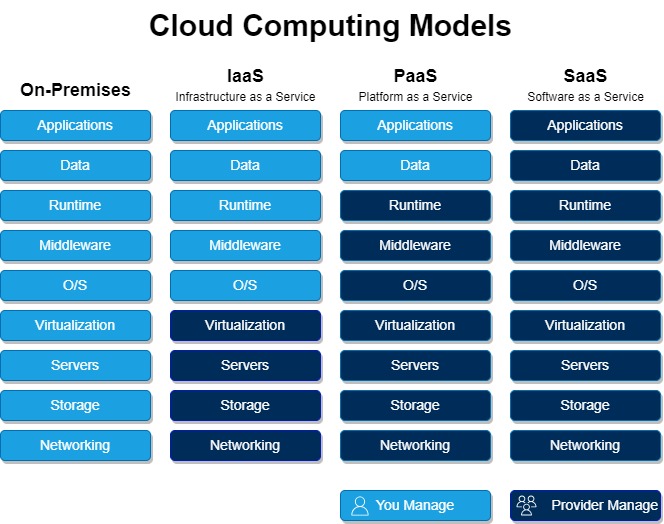Software as a Service (SaaS)
Contents
Software as a Service (SaaS)#
Software as a service (SaaS) is undeniably changing the way we think about and use software. We no longer have to install and maintain software on our own computers or devices; instead, we may get it over the internet, generally for a fee. This move has huge repercussions for organizations as well as individual individuals.
Software as a Service, or SaaS, represents a cloud computing method for delivering software over the internet. SaaS refers to a model of software distribution, in which software is hosted centrally. It’s a type of cloud computing service in which a customer gets an application through the internet. SaaS (Software as a Service) is a newer paradigm of software development and delivery that has gained a lot of traction in recent years. Unlike the conventional software development strategy, which involves installing software on a local workstation, SaaS applications are hosted on a distant server and accessed via a web browser. One of the main advantages of SaaS is that it can be accessed from anywhere via a connection over the internet.

What are the risks and challenges associated with Software as a Service (SaaS)?#
SaaS, like any other sort of software, comes with its own set of risks and obstacles. Security is perhaps the most serious problem. SaaS programs may be more vulnerable to attack than on-premise software because they are housed in the cloud. Furthermore, SaaS companies may not have the same level of protection as bigger corporations. Another danger to think about is vendor lock-in. After you’ve invested in a SaaS product, you may be reliant on that provider for support and upgrades in the future. This may limit your flexibility and raise your costs in the long run. Finally, make sure that your SaaS vendor has a solid disaster recovery strategy in place.
What are the advantages of SaaS (Software as a Service)?#
Compared to traditional software applications, SaaS offers a variety of benefits. The fact that SaaS is distributed through the internet means that users may access it from any location, at any time. This represents a major beneficiary for businesses with staff who work from home or travel often. Another advantage of SaaS is being less expensive than conventional software. There’s no need to download anything, and instead of a one-time purchase price, consumers often pay a monthly or yearly membership cost. For businesses, especially small firms with limited IT costs, this might represent significant savings. Traditional software is far more difficult to use than SaaS solutions.
What are the disadvantages of SaaS (Software as a Service)?#
There are several drawbacks to SaaS, but it’s vital to remember that each company is unique. What can be considered a disadvantage for one vendor may be a benefit for another one. Before deciding whether SaaS is the appropriate match for your company, it’s critical to assess your personal demands. As a result, below are some of the drawbacks of SaaS: 1.Limited authority. You are effectively renting software from a provider when you utilize SaaS. As a result, you don’t have as much control over the program as you would if you developed it yourself. 2.Difficulty to switch vendors. Data migration between vendors is difficult, due to data formats and technology used.
Final Words#
The software-as-a-service market is exploding, and it’s evident that this trend will continue. This form of software has several advantages over traditional software, and it is growing in popularity among companies of all sizes. If you’re considering employing software as a service for your company, make sure to look into the many possibilities to discover the greatest fit for your needs.
See also
Do you want to get practical skills to work in cybersecurity or advance your career? Enrol in MCSI Bootcamps
